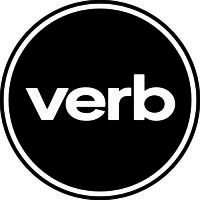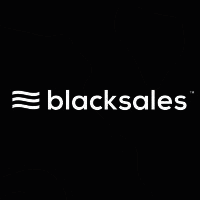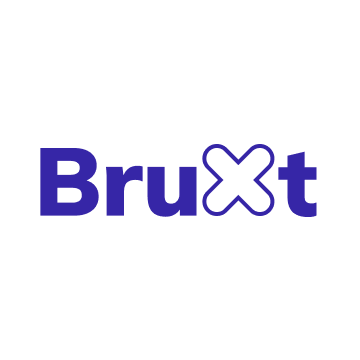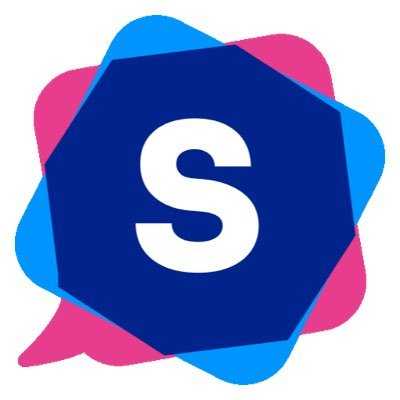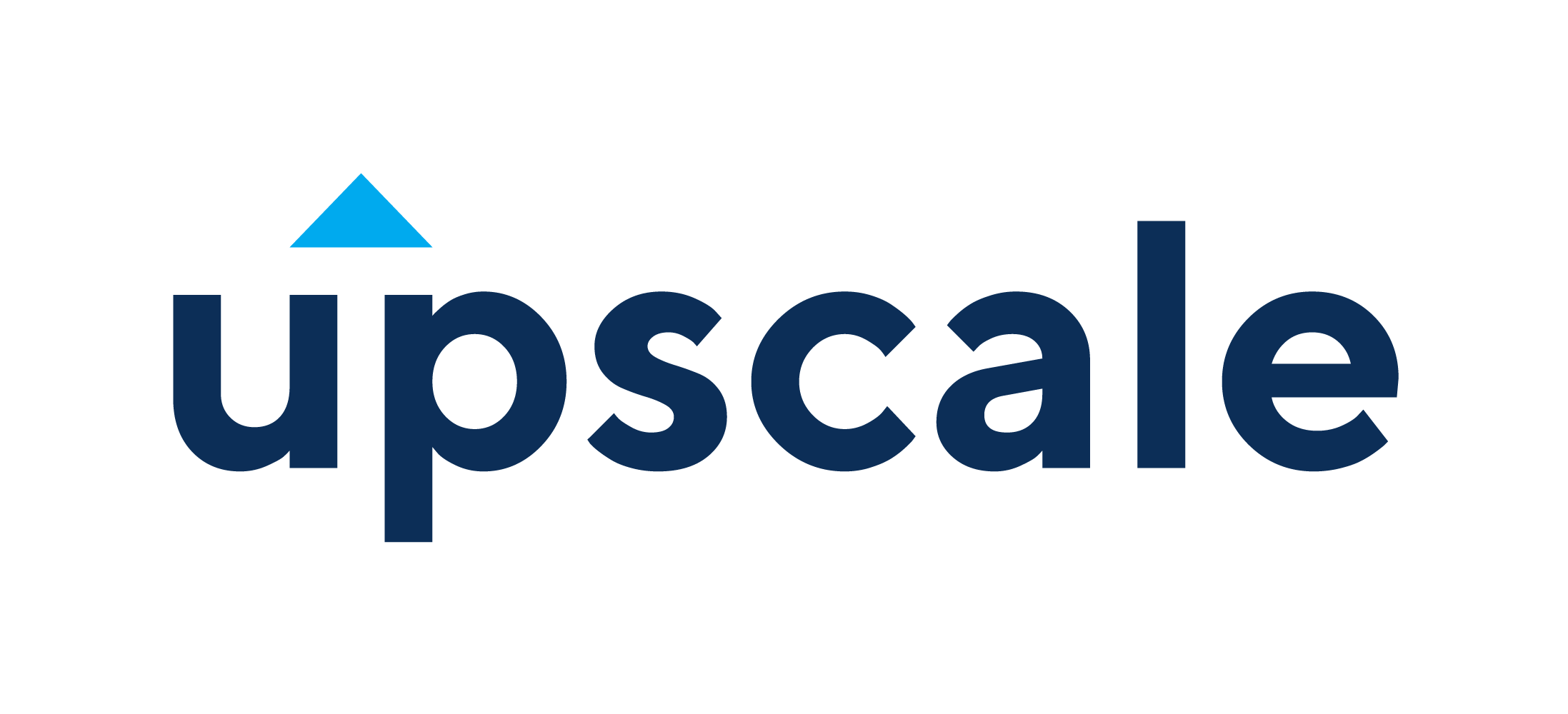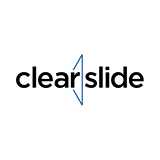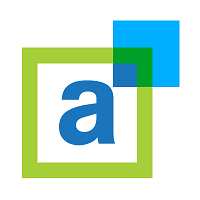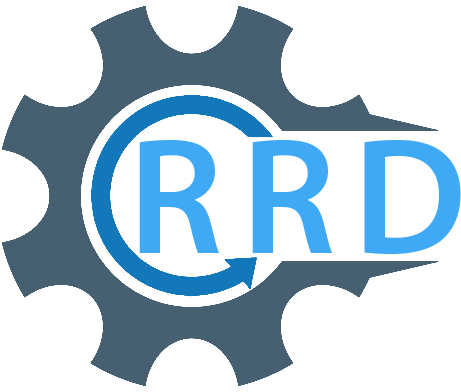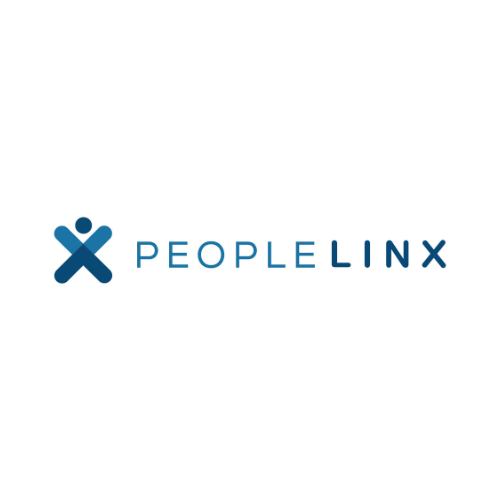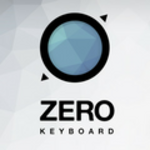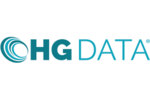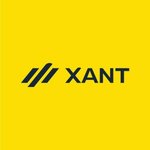Yes, most sales enablement software is designed to be accessible from a variety of devices and platforms. This implies that sales teams may use the program from their desktop computers, laptops, tablets, and even cellphones. Furthermore, the program is frequently compatible with several operating systems such as Windows, MacOS, and Android, making it simple for teams to work and exchange information regardless of which device they are using.
List of 20 Best Sales Enablement Software
Lucidpress is graphics creation platform that enables users to produce high-quality print, mobile, and web content. Boasting a satisfied user community of over 4 million, it offers a user-friendly drag-and-drop editor, smooth social media sharing, an...Read More Lucidpress
Valuecase - a dynamic digital tool designed for B2B sales teams to enhance their customer-centric sales approaches. Our user-friendly platform offers fully customizable options and a variety of standard add-ons to assist businesses in streamlining an...Read More Valuecase
verbTEAMS is a software that is revolutionizing the industry. With advanced technology, verbTEAMS optimizes collaboration and simplifies workflows for unparalleled efficiency. Elevate your team management and project execution with our cutting-edge f...Read More verbTEAMS
Wavo - the innovative solution for outbound sales, recruiting, and link building. With Wavo, you can easily send customized cold emails and automated follow-ups right from your email account. Take your outreach tactics to the next level with our high...Read More Wavo
Blacksales - your all-in-one solution for efficient B2B prospecting. Our innovative platform provides tailored strategies and automated digital resources, streamlining lead generation and maximizing your ROI. With a proven track record of success, ov...Read More Blacksales
Bruxt is a B2B contact data solution for global professionals and organizations. Our advanced platform gives your company a competitive advantage, providing reliable and up-to-date B2B contacts. Stay ahead in the market with Bruxt and power up your b...Read More Bruxt
Gong.io is an AI-powered platform designed to strengthen sales representatives abilities through comprehensive training. By leveraging conversation data in real-time, this cutting-edge solution enhances training and generates dynamic, data-driven res...Read More Gong.io
SmartCue solution for creating personalized product demo libraries for smooth and effective prospect presentations. With real-time visual and textual cues, tailored to your teams and prospects requirements, our platform makes closing deals effortless...Read More SmartCue
Skylead is a premier cloud-based solution that offers combination of LinkedIn automation and cold email tools to boost your sales strategy. This all-in-one platform is ideal for sales professionals, recruiters, marketers, and agency owners, providing...Read More Skylead
Upscale is an innovative sales engagement software designed to drive revenue growth through targeted multi-channel sequences. Our platform streamlines sales processes, enabling sales teams to effectively convert leads and generate a consistent stream...Read More Upscale
ClearSlide is a reliable, cloud-based platform that equips sales teams with robust analytics and comprehensive insights into customer interactions across multiple channels, including email, phone, and in-person. Our solution offers superior performan...Read More ClearSlide
Accent Accelerator is asoftware designed to empower sales teams and enhance their performance in the competitive B2B market. With its advanced features, valuable data, and cutting-edge technology, this solution equips your team to achieve success in...Read More Accent Accelerator
Round Robin Distributor is a tool for Sales and Service teams to streamline lead assignment and case routing. With automatic distribution, territory and skill-based routing, and relationship-based assignment, this software ensures fair and efficient...Read More Round Robin Distributor
Oracle Sales Cloud is solution designed to streamline sales processes, enhance client relationships, and improve overall productivity. Its easy-to-use interface and advanced data analysis capabilities equip sales teams to close deals faster and prope...Read More Oracle Sales Cloud
monday sales CRM solution for sales managers and teams seeking to enhance their sales process. This powerful tool enables you to take charge of the entire sales cycle, from generating leads to communicating with clients, effortlessly. Say farewell to...Read More monday sales CRM
Sales Rabbit is a sales solution that supercharges your sales strategies and maximizes their impact. Our state-of-the-art software includes a comprehensive task management app, enabling you to effortlessly assign territories and track sales performan...Read More Sales Rabbit
PeopleLinx solution for accelerating your go-to-market process, streamlining lead generation, and securing more successful deals. Our cutting-edge platform enables sales teams to take charge and increase their productivity, leading to improved effici...Read More PeopleLinx
Zero Keyboard solution for effortless data entry. Using voice commands and personalized shortcuts, this tool streamlines the input process while ensuring accuracy. Say goodbye to manual data entry and hello to increased efficiency. Integrated with mu...Read More Zero Keyboard
HG Data is software designed to provide cutting-edge technology intelligence for businesses. Our platform offers valuable insights to optimize go-to-market strategies, drive sales and marketing efforts, and inform data-driven decision-making for grow...Read More HG Data
Playbooks solution for high-performing sales teams. Our software offers intelligent suggestions and analysis to boost efficiency, allowing reps to focus on key tasks and effectively target potential clients for maximum profit growth. With Playbooks,...Read More Playbooks
Learn More About Sales Enablement Software
- What Is Sales Enablement Software?
- What Are The Recent Trends In Sales Enablement Software?
- Benefits Of Using Sales Enablement Software
- Important Factors To Consider While Purchasing Sales Enablement Software?
- What Are The Key Features To Look For In Sales Enablement Software?
- Why Do Businesses Need Sales Enablement Software?
- How Much Time Is Required To Implement Sales Enablement Software?
- What Is The Level Of Customization Available In Sales Enablement Software?
- Which Industries Can Benefit The Most From Sales Enablement Software?
- Conclusion
What Is Sales Enablement Software?
Sales Enablement Software is a strong tool that streamlines and optimizes the sales process for firms of any size. In today's competitive market, a competent and efficient sales force is critical to success. However, as sales cycles become more complex and technology evolves, it can be difficult for sales professionals to keep up with the changing landscape and consistently reach their targets.
Here's where sales enablement software comes in. Sales enablement software is a comprehensive platform that integrates a variety of tools and resources to help sales teams operate to their full potential. It serves as a hub for all sales-related activities, giving users quick access to anything from training materials and marketing brochures to customer data and analytics.
With all of this critical information in one location, sales professionals can easily discover what they need while remaining organized, saving time and enhancing productivity. One of the most important advantages of sales enablement software is its ability to coordinate sales and marketing operations. This software allows marketing teams to generate and distribute customized content and campaigns, while sales representatives can track and use this content to engage with leads and drive conversions.
This not only increases communication between the two teams, but also helps to bridge the gap between marketing efforts and actual sales outcomes. Additionally, sales enablement software provides comprehensive analytics and reporting capabilities. This enables sales managers to evaluate their team's performance, identify areas for development, and make data-driven decisions to enhance the sales process.
These insights also assist firms in maintaining current with industry trends and adapting their strategy accordingly, allowing them to stay ahead of competitors. In addition to these essential functions, sales enablement software may incorporate lead scoring, CRM connection, and document management.Some software may also provide mobile accessibility, allowing sales representatives to access vital information on the go and remain productive while out in the field.
Overall, sales enablement software is a worthwhile investment for any company trying to improve its sales performance and revenue. By optimizing processes, aligning teams, and offering actionable insights, it enables sales people to work smarter, not harder, resulting in business development. So, if you're looking for sales enablement software, carefully examine your business requirements and select a system that provides the proper balance of features to elevate your sales approach.
What Are The Recent Trends In Sales Enablement Software?
Sales enablement software has evolved fast in recent years to meet the changing needs of sales teams.
Let's explore, we'll look at the current trends in sales enablement software and how they can help your business.
1. Integration With AI And Machine Learning: One of the most significant advancements in sales enablement software is the incorporation of artificial intelligence and machine learning capabilities. This technology automates time-consuming procedures and delivers insights to sales personnel, allowing them to personalize their approach and have more meaningful encounters with potential consumers.
2. Mobile Accessibility: As more sales teams work remotely and on the road, sales enablement software now includes mobile accessibility, allowing representatives to access content, interact, and connect with prospects and clients at any time and from any location. This ensures that your sales crew is always connected and can respond quickly to consumer needs.
3. Improved Analytics: Data is critical to any business, and sales enablement software is no exception. The most recent software packages include comprehensive analytics and reporting tools for tracking the performance of sales techniques and content. This information enables the ongoing improvement and optimization of sales efforts.
4. Personalization And Customization: As marketing efforts have become more personalized, sales enablement software has followed suit. Features like dynamic content and tailored recommendations allow sales reps to adjust their approach to each prospect, boosting the likelihood of a successful sale.
5. Seamless Integration With CRM: Effective sales operations require seamless integration of sales enablement software with customer relationship management (CRM) systems. This integration provides a consolidated view of client data, which improves communication and collaboration between sales and marketing teams.
6. Interactive Material: In today's digital age, shoppers need more engaging and interactive material. Sales enablement software now includes interactive presentations, movies, and quizzes, making it easier to catch and retain the attention of potential clients.
7. Alignment With Sales And Marketing: Sales enablement software is more than simply a tool for sales teams. It has evolved into a platform for coordinating sales and marketing efforts, ensuring that both teams are on the same page and working toward a shared goal.
Benefits Of Using Sales Enablement Software
Sales enablement software is a powerful tool that may significantly increase the productivity and effectiveness of a sales team. It is intended to give sales representatives with the materials and support they need to effectively engage with potential clients and close agreements. The advantages of implementing sales enablement software are numerous, and they can have a substantial impact on the entire sales process.
Let's look at how this software can improve your sales effectiveness and boost business growth.
1. Centralizing Content And Resources: With sales enablement software, all of your marketing and sales materials are organized and easily available to your sales force. This guarantees that all representatives have access to the most current and relevant content, saving them time and effort in searching for resources. Furthermore, this centralization improves content categorization, making it easier for reps to identify and use items that are relevant to certain sales scenarios.
2. Customized And Personalized Sales Presentations: One of the most important advantages of sales enablement software is the ability to build customized sales presentations for each customer. By personalizing the content to the prospect's specific wants and pain spots, you boost your chances of a successful pitch. Furthermore, the program enables representatives to instantly swap out or add new slides based on the customer's interests and concerns, making the presentation more fluid and engaging.
3. Real-Time Analysis And Insights: Sales enablement software frequently includes comprehensive analytics and reporting features, allowing sales managers to monitor the success of their teams and individual reps in real time. This information can provide useful insights into which sales assets are most productive and which areas may need development. With this information, sales managers may make more educated decisions to improve the sales process and achieve greater results.
4. Effective Sales Training: Sales enablement software can also be useful for sales training and onboarding. Because all resources are maintained in one location, new reps can easily access and familiarize themselves with sales materials, making the onboarding process more effective. The software may also monitor a representative's progress through training materials and detect knowledge gaps, allowing for focused coaching and improvement.
5. Improved Sales Productivity: Sales enablement software, which includes a single knowledge hub, personalized sales presentations, and real-time insights, can greatly increase sales rep productivity. They can devote more time to communicating with potential consumers rather than hunting for resources. This increased efficiency might result in more closed deals and a better return on investment (ROI) for your sales force.
Important Factors To Consider While Purchasing Sales Enablement Software?
When it comes to choosing sales enablement software, there are numerous key considerations that every buyer should consider. This will ensure that you not only select the best software for your company's needs, but also get the most out of your investment.
1. Business Goals And Objectives: Before beginning your search for sales enablement software, you should first determine the business goals and objectives that you want the program to help you achieve. This will help you select the features and functionalities that are most relevant to your business objectives.
2. Ease Of Use: The usability of the sales enablement software is critical since it determines how quickly your team can adopt and use it efficiently. Choose software that is intuitive and easy to use, with a short learning curve.
3. Customization And Scalability: Because each organization has distinct requirements, it is critical to select sales enablement software that can be tailored to your individual needs. In addition, evaluate your company's future growth and select a solution that can scale and adapt to changing needs.
4. Integration Capabilities: For sales enablement software to be truly effective, it must interact easily with your existing systems and tools, such as customer relationship management (CRM) platforms, marketing automation software, and content management systems.
5. Content Management Features: Sales enablement is all about providing your sales force with relevant content at the correct moment. Look for software that includes powerful content management features like version control, content organization, and search capabilities.
6. Analytics And Reporting: Data is critical to every company decision-making process. Look for sales enablement software that includes full analytics and reporting tools so you can monitor your team's performance, discover areas for improvement, and make data-driven decisions.
7. Support And Training: Implementing new software can be difficult, so select a system that has enough support and training resources. This can include onboarding, tutorials, and a support crew that is always accessible to help with any concerns.
8. Pricing And Budget: Sales enablement software is available at a variety of price points, so it is critical to understand your budget and select a solution that provides the best value for money.
Consider the features and functionalities provided in each bundle to see which one best fits your budget and business demands. By taking these crucial elements into account, you can make an informed decision about choosing sales enablement software that will not only suit your current demands but also help your company's long-term growth. Before making a final decision, make sure to investigate and evaluate your possibilities.
What Are The Key Features To Look For In Sales Enablement Software?
Sales enablement software is a strong tool that may help firms optimize their sales operations and increase their profits. However, with so many options on the market, it can be difficult for consumers to choose the best software for their firm.
To simplify the decision process, below are the important features to look for in sales enablement software:
1. Content Management: The software should have strong content management features, allowing for easy categorization, storage, and retrieval of sales assets such as presentations, product brochures, and case studies.
2. Personalization And Customization: The ability to tailor material to each prospect or client is crucial to a successful sale. Look for software with dynamic content production and customisation capabilities.
3. Analytics And Reporting: Sales enablement software should have thorough analytics and reporting, such as content utilization, engagement rates, and sales performance, to assist sales teams in making data-driven decisions and improving their strategies.
4. Integration With Existing Systems: Ensure that the program integrates seamlessly with your existing CRM and sales tools. This will help to streamline your workflows and keep all data in sync.
5. Mobile Compatibility: In today's fast-paced company environment, sales staff must be able to access content and information while on the road. Look for mobile-friendly software that provides the same functionality as the desktop version.
6. Training And Onboarding: The software should provide extensive training and onboarding support to assist your sales team in swiftly adjusting to the new system and understanding its features and functionalities.
7. Sales Coaching And Playbooks: Sales enablement software should contain sales coaching and playbooks to help sales reps use content to complete more deals.
8. Lead Management: The software should include lead management features that allow sales teams to track the status of their leads and prioritize their efforts accordingly.
9. Customer Relationship Management: Look for software that allows sales representatives to track and manage customer interactions.
10. Ease Of Use And User Interface: The software should have an easy-to-use interface that allows sales representatives to quickly access and use the functions they require.
By keeping these critical aspects in mind, you can make an informed selection and choose the best sales enablement software for your organization's needs and to help your sales staff reach their objectives.
Why Do Businesses Need Sales Enablement Software?
Businesses want Sales Enablement Software because it offers a full solution for improving their sales process. With ever-changing market dynamics and increased competition, organizations must provide their sales teams with the necessary tools and resources to stay ahead of the competition. Sales enablement software provides a consolidated platform for firms to develop, store, and share marketing and sales information.
This guarantees that all sales personnel have access to the most recent and accurate information, eliminating the possibility of misinformation being shared with potential consumers. Furthermore, by leveraging data analytics and AI-driven insights, sales enablement software enables firms to better understand consumer behavior and preferences, allowing them to adjust their sales strategy.
This, in turn, results in increased consumer engagement and conversion rates. Furthermore, sales enablement software accelerates the sales process by automating monotonous operations, giving sales representatives more time to focus on creating relationships and closing agreements. It also provides real-time visibility into the sales pipeline, allowing organizations to monitor performance and pinpoint areas for improvement.
In essence, investing in sales enablement software is a wise decision for firms trying to improve efficiency, productivity, and sales effectiveness. It not only guarantees that the sales staff has the tools they need to succeed, but it also helps to reinforce the whole sales strategy, resulting in increased income.
How Much Time Is Required To Implement Sales Enablement Software?
The time required to implement sales enablement software varies based on a number of factors, including the software's complexity, the size of the sales team, and the organization's readiness to fully adopt the technology. However, successfully implementing sales enablement software can take anywhere from a few weeks and a few months.
The initial setup and configuration of the program typically takes the most time, since it requires integrating with existing systems, configuring rights and user access, and customizing the software to meet the organization's specific needs. This could take many weeks to complete, depending on the level of customization required. Once the software is installed, the following step is to teach the sales team how to utilize it efficiently.
This can take anywhere from a few days to several weeks, depending on the size of the team and the complexity of the software. It is critical that all team members are familiar with the program and understand how to use it to its fullest extent. In addition, time should be set out for data migration, if necessary, as well as testing and debugging any issues that may develop during the installation process.
It is critical to properly test the software and make any necessary changes before fully implementing it. It's also worth noting that the implementation process doesn't finish once the first setup is completed. Ongoing training and support may be required to ensure that the software meets the needs of the company and that the sales force is making the best use of it possible.
What Is The Level Of Customization Available In Sales Enablement Software?
Sales enablement software helps firms improve sales process efficiency by giving tools and resources to sales teams. The level of customisation provided by the sales enablement software is an important consideration when selecting the best option for your firm. Customization enables firms to adjust the program to their individual requirements, making it a versatile and effective tool in their sales strategies.
The extent of customisation in sales enablement software varies according to the provider and package selected. However, most sales enablement software provides a high level of customization, allowing firms to tailor the software to their specific needs. The first degree of personalization is branding. Almost all sales enablement software allows organizations to customize their logo and brand colors, giving the program a more professional and coherent appearance.
This also improves team engagement and fosters a sense of ownership among the sales team. The second level of customization entails developing the user interface to meet the specific requirements of the organization. This could include reorganizing categories, adding or removing features, and personalizing dashboards to reflect individual tastes. Another important type of customisation is content management.
Sales teams may publish and organize their sales content in a way that is easily accessible and relevant to potential customers. Businesses can also utilize tagging and categorizing tools to arrange content by topic, product, or industry. Sales enablement software also lets you customize training and coaching materials.
This enables firms to integrate training materials with their individual sales tactics, giving their sales people the skills they need to succeed. Furthermore, some sales enablement software has personalized dashboards and reporting, allowing firms to track specific metrics and statistics that correspond with their sales goals. Finally, while selecting sales enablement software, it is critical to evaluate the level of customization it provides. Choosing software that can be adjusted to your organization's specific demands can have a big impact on the success of your sales strategy and lead to increased income.
Which Industries Can Benefit The Most From Sales Enablement Software?
Sales enablement software is a crucial tool for firms aiming to increase sales and efficiency. However, not all industries may require or profit from it in the same manner. So, which sectors would gain the most from sales enablement software? Let's have a closer look.
1. Technology: The technology business is highly competitive, and it frequently entails complex products and services that must be thoroughly understood before they can be successfully sold. This makes it a prime choice for sales enablement software. With capabilities such as content management, sales training, and analytics, technology sales teams can stay up to speed on the most recent product knowledge and sales strategies, resulting in higher productivity and successful sales.
2. Healthcare: The healthcare business demands a high level of precision and efficiency in its sales activities. Sales enablement software can assist healthcare firms in optimizing sales operations, guaranteeing regulatory compliance, and offering tailored sales support to clients. With information readily available and accessible, sales reps find it easier to educate clients on complex medical products and services, resulting in increased sales.
3. Financial Services: Financial services businesses frequently struggle to keep their sales personnel up to date on new rules, financial products, and market trends. This is where sales enablement software comes in, offering up-to-date material and sales training that can be accessible at any time and from any location. Sales staff may better understand their prospects and adapt their pitches with real-time data and analytics, resulting in increased customer engagement and sales.
4. Manufacturing: The manufacturing industry has several products, a complex supply chain, and a constantly shifting market landscape, making it tough for sales teams to keep track of everything. Sales enablement software can assist manufacturers by organizing product information, tracking sales activities, and providing insights into market trends. This allows sales professionals to have more informed conversations with clients, which increases their chances of closing business.
5. Professional Services: Professional service firms, like legal firms, consulting firms, and accounting firms, frequently rely on connections to earn revenue. Sales enablement software can assist these businesses nurture customer relationships by offering valuable content and sales training that will keep them engaged with prospects and clients. This leads to more cross-selling and upselling opportunities, which boosts sales and revenue.
Conclusion
Finally, investing in powerful and efficient sales enablement software can have a big impact on your sales team's success and overall business growth. With the correct features and capabilities, this application can help to expedite your sales process, increase productivity, and improve team cooperation. As you can see from this buyer's guide, there are several elements to consider when selecting a sales enablement software, including ease of use, integration possibilities, reporting and analytics, and mobile accessibility.
To make an informed decision, you must first examine your specific business demands and match them to the characteristics of the program. We've compiled a thorough list of the best sales enablement software alternatives, each with its own set of features and pricing plans. We strongly advise taking advantage of free trials and demonstrations to gain hands-on experience and receive feedback from your team before making a purchase.
Remember that the software you use will have a significant impact on the effectiveness of your sales enablement strategy. We hope this guide has provided you with useful insights and advice to help you pick the best sales enablement software for your firm. Happy selling!
Sales Enablement Software FAQ's
Can Sales Enablement Software Be Accessed Across Multiple Devices And Platforms?
Is Sales Enablement Software Future-Proof And Adaptable To Emerging Technologies Like AI, Blockchain Or IoT?
Yes, Sales Enablement Software is intended to be future-proof and adaptable to new technologies such as AI, blockchain, and IoT. As technology improves, sales teams must keep ahead of the curve in order to effectively engage clients.
Sales Enablement Software uses these technologies to give personalized content, predictive lead scoring, and real-time data, allowing sales teams to deliver more effective and efficient sales tactics. Sales Enablement Software's ability to integrate with new and developing technologies keeps your sales operations up to date.
Is There A Free Trial Offered To Assess Sales Enablement Software Before Committing?
Many sales enablement software companies provide free trial periods so that potential customers can test out their platform before making a commitment. These trials normally last 14 to 30 days and allow users to test all of the software's features and capabilities. This is an excellent opportunity to determine whether the program suits your sales team's specific objectives and goals before making a purchase.
Does Sales Enablement Software Offer Data Security Features And Meet Regulatory Compliance Standards?
Yes, most sales enablement software includes data security safeguards to secure sensitive information. These features could include encryption, user authentication, and access controls. Furthermore, many sales enablement software platforms are built to fulfill regulatory compliance standards such as GDPR and HIPAA, ensuring that your data is handled legally and ethically. This gives businesses and clients piece of mind when it comes to data protection.
Can Sales Enablement Software Integrate Seamlessly With Existing Tools And Platforms?
Sales enablement software is designed to work seamlessly with existing sales tools and platforms. This creates a more effective workflow and reduces the need to frequently switch between several systems. The software often includes integration possibilities with popular CRM systems, email platforms, and project management tools. With a seamless interface, sales teams can simply access all relevant information and collaborate effectively, resulting in increased productivity and sales success.



